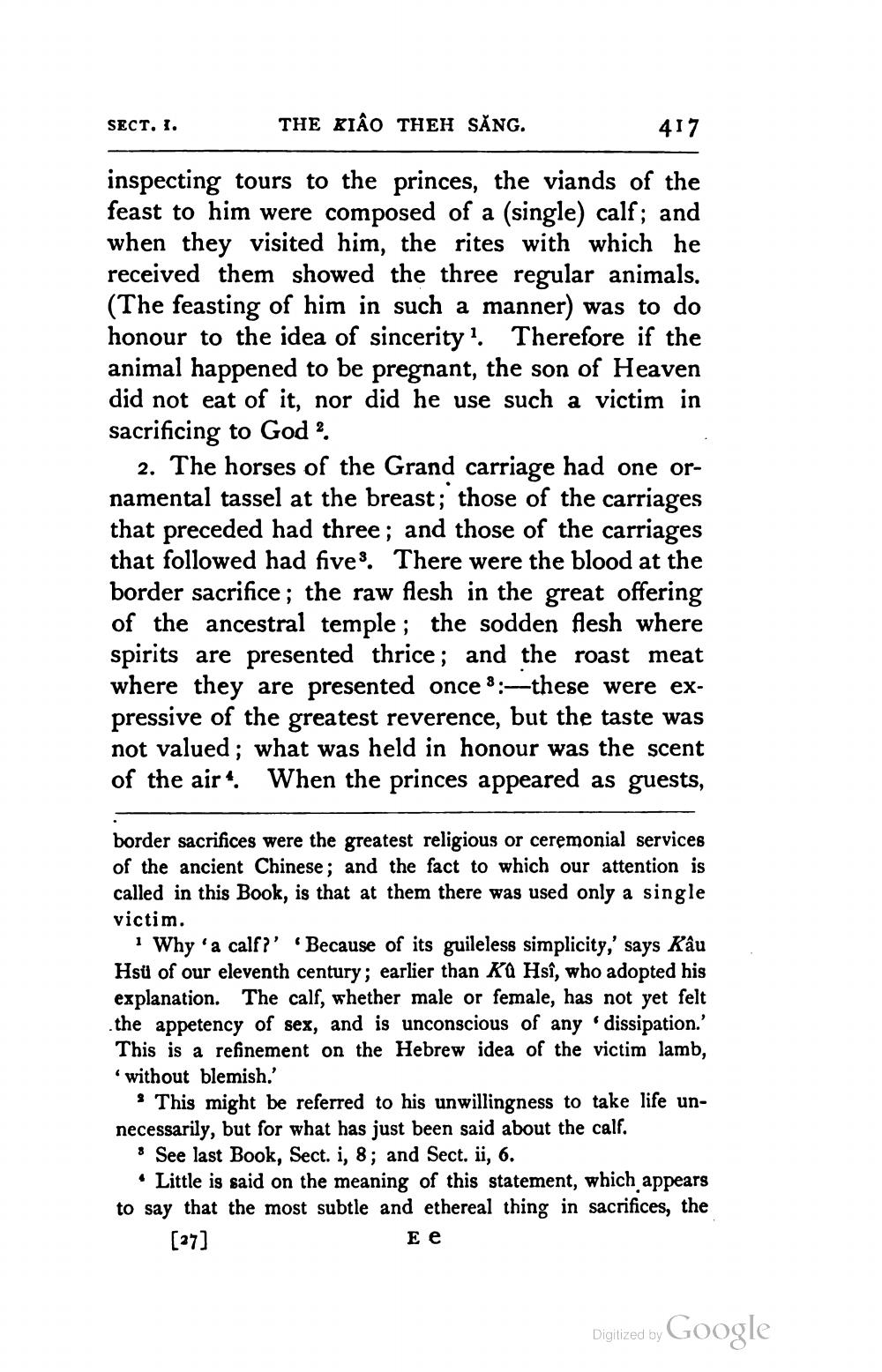________________
SECT. I.
THE KIAO THEH SÁNG.
417
inspecting tours to the princes, the viands of the feast to him were composed of a (single) calf; and when they visited him, the rites with which he received them showed the three regular animals. (The feasting of him in such a manner) was to do honour to the idea of sincerity? Therefore if the animal happened to be pregnant, the son of Heaven did not eat of it, nor did he use such a victim in sacrificing to God.
2. The horses of the Grand carriage had one ornamental tassel at the breast; those of the carriages that preceded had three; and those of the carriages that followed had fives. There were the blood at the border sacrifice; the raw flesh in the great offering of the ancestral temple; the sodden flesh where spirits are presented thrice; and the roast meat where they are presented once 8:—these were expressive of the greatest reverence, but the taste was not valued; what was held in honour was the scent of the air 4. When the princes appeared as guests,
border sacrifices were the greatest religious or ceremonial services of the ancient Chinese: and the fact to which our attention is called in this Book, is that at them there was used only a single victim.
Why 'a calf?' 'Because of its guileless simplicity,' says Kâu Hsü of our eleventh century; earlier than Ka Hsî, who adopted his explanation. The calf, whether male or female, has not yet felt the appetency of sex, and is unconscious of any dissipation.' This is a refinement on the Hebrew idea of the victim lamb, without blemish.'
9 This might be referred to his unwillingness to take life unnecessarily, but for what has just been said about the calf. * See last Book, Sect. i, 8; and Sect. ii, 6.
Little is said on the meaning of this statement, which appears to say that the most subtle and ethereal thing in sacrifices, the [37]
Ee
Digitized by Google




